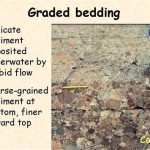Gravel Bedding in Construction: Purpose and Essential Aspects
Gravel bedding serves as a crucial foundation layer in various construction applications, providing stability, drainage, and support for structures. Understanding the purpose and essential aspects of gravel bedding is essential for ensuring the durability and performance of any construction project.
Purpose of Gravel Bedding
Gravel bedding primarily serves three main purposes in construction:
- Stability: Gravel provides a stable base for structures by distributing the load evenly over a wider area. This reduces stress concentration and prevents uneven settling, which could otherwise damage the structure.
- Drainage: The porous nature of gravel allows water to drain freely, preventing moisture accumulation and protecting the structure from damage caused by waterlogging.
- Support: Gravel provides additional support to structures, especially those with heavy loads or subject to vibrations. The interlocking nature of gravel particles helps to create a firm and supportive subgrade.
Essential Aspects of Gravel Bedding
To ensure the effectiveness of gravel bedding, several essential aspects must be considered:
1. Gravel Type and Gradation
The type of gravel used for bedding depends on the specific application and load requirements. Well-graded gravel with a range of particle sizes is typically preferred to ensure proper interlock and stability.
2. Compaction
Proper compaction of the gravel bedding is crucial to achieve the desired density and prevent settlement. Compaction methods vary depending on the type of gravel and the project specifications.
3. Thickness
The thickness of the gravel bedding is determined based on the anticipated loads and soil conditions. A thicker layer of gravel is generally required for heavier loads or weaker soils.
4. Drainage Provisions
Adequate drainage provisions should be made to allow water to flow freely through the gravel bedding. This can involve installing drainage pipes or creating a sloped surface to facilitate drainage.
5. Geotextile Separation Layer
A geotextile separation layer can be placed between the gravel bedding and the overlying material to prevent mixing and maintain the integrity of the bedding.
6. Frost Protection
In areas subject to freezing temperatures, it may be necessary to install a frost protection layer beneath the gravel bedding to prevent frost heave and damage to the structure.
Conclusion
Gravel bedding plays a vital role in the stability, drainage, and support of various construction projects. By understanding the purpose and essential aspects of gravel bedding, engineers and contractors can ensure the long-term performance and durability of their structures.

Truckcell Heavy Duty Permeable Pavers For Gravel Installation Guide

Gravel Cinder And Hoggin Paths Drives Pavingexpert

Pipe Bedding Material

Stone Columns With Diffe States Of Gravel Mattress D H Scientific Diagram

Gravel Cinder And Hoggin Paths Drives Pavingexpert

What Is Backfilling In Construction Jouav

The Ultimate Guide To Gravel Pros Cons And Uses Of
Why Do Road Construction Crews Spread Rocks Gravel On The Quora

Gravel Beds The Ufor Nursery Lab

Bedding Layer An Overview Sciencedirect Topics
Related Posts








